The outcome of recent election in Canberra, ACT (Australian Capital Territory)
showed a big swing from the ruling ALP (Australian Labor Party) to Greens.
Out of 17 seats, ALP won 7 seats, Liberal Party (LP, a conservative opposition)
won 6 seats, and Greens won 4 seats. Without Greens, either ALP or LP cannot
assemble the ACT government.
Currently Greens are negotiating with both ALP and LP to decide which party they would support to form the government. Thus, Greens are in the position of so-called "King Maker" by choosing the leader of ALP (Jon Stanhope) or LP (Zed Seselja) as the ACT premier (Chief Minister).
Since the "Tampa incident" in 2001 during the federal election when the
opposition ALP failed to speak out for human rights of "boat people" (refugee
over boats), many ALP supporters (in particular left-wing fraction) began
to switching their support to Greens led by Dr. Bob Brown of Tasmania Island,
the only opposition party that spoke out for these poor people. During last
several years about 30% of ALP supporters in total shifted their support
to Greens which focus mainly on environmental conservation and fundamental
human rights, and are firmly against Iraq War.
Unlike Japan and Europe, there is no socialists' or communists' party here
in Australia. The Australian political view is rather moderate, and Greens
represent the voice of the most progressive people in this country.
ACT Greens storm into balance of power (26/10/2008)
The ACT Greens have managed to produce a significant swing of 7 % polling just under 16%. The Greens won eventually 4 seats, holding the balance of power in the Legislative Assembly.
In the electorate of Molonglo The Greens have won two seats, polling
19 % up 7 %, ensuring Shane Rattenbury and Caroline Le Couteur.
In the electorate of Brindabella The Greens have polled 14 % up 7 % giving Amanda Bresnan a seat, and in Ginninderra The Greens polled 15 % up 6% which gives Meredith Hunter a seat.
Australia must embrace UN's "Green New Deal" (23/10/2008)
Top global economists from the United Nations Environment Program and Deutsche
Bank overnight launched a plan for a "Green New Deal", echoing FDR's "New
Deal" to work US out of the Great Depression, to tackle the current economic
and climate crisis together.
"Greens" Senator Christine Milne called on the Aussie Government led by
Kevin Rudd to embrace the plan which would see a massive investment in energy
efficiency, renewable energy, alternative transport and forest protection,
creating high quality, permanent jobs in a thriving, prosperous, green economy.
2008年10月22日水曜日
2008年10月21日火曜日
A Huge Change ("Blue" Shift) in Ohio and Florida
for Recovery from Deep Financial Crisis
Al Gore and John Kerry lost to George Bush in the 2000 and 2004 US election,
mainly due to their narrow loss in both Ohio and Florida. Because of this
fatal loss, during last 8 years all of us have suffered from a series of
ill-managements by his cabinet such as the 9/11 Attack, Iraq War, Hurricane
"Katrina", Global Warming and current Deep Depression. To recover from these
huge damages, we need a new FDR to combat these problems with his new vision
and decisive action.
For such a drastic change in US politics for the coming years, the majority
of eligible minds in the two "marginal" (closely contesting) states, both
Ohio and Florida, have to be changed from "Red" (for McCain ) to "Blue"
(for Obama). Without this landslide "Blue" shift, our situation in both
US and the rest of our world would get progressively worsen towards the "Great
Depression".
Who is the "right" commander-in-chief?
Also I would like to remind you of one more thing. John McCain fought for
the "wrong" war (Vietnam War). Bobbie Kennedy fought 1968 election to stop
this "wrong" war. Barack Obama stood firmly against another "wrong" war
(Iraq War) from the very beginning.
So if you ask who would be the "right" commander-in-chief, I would say,
Obama, and not McCain. McCain was not the "right" decision maker.
FDR was the last US president who supported the "right" war (WWII) against
Nazi Germany and Japan which attacked China and eventually "Pearl Harbor".
WWII was the only war that boosted US economy for last seven decades. His
"New Deal" and WWII rescued US from the Great Depression.
mainly due to their narrow loss in both Ohio and Florida. Because of this
fatal loss, during last 8 years all of us have suffered from a series of
ill-managements by his cabinet such as the 9/11 Attack, Iraq War, Hurricane
"Katrina", Global Warming and current Deep Depression. To recover from these
huge damages, we need a new FDR to combat these problems with his new vision
and decisive action.
For such a drastic change in US politics for the coming years, the majority
of eligible minds in the two "marginal" (closely contesting) states, both
Ohio and Florida, have to be changed from "Red" (for McCain ) to "Blue"
(for Obama). Without this landslide "Blue" shift, our situation in both
US and the rest of our world would get progressively worsen towards the "Great
Depression".
Who is the "right" commander-in-chief?
Also I would like to remind you of one more thing. John McCain fought for
the "wrong" war (Vietnam War). Bobbie Kennedy fought 1968 election to stop
this "wrong" war. Barack Obama stood firmly against another "wrong" war
(Iraq War) from the very beginning.
So if you ask who would be the "right" commander-in-chief, I would say,
Obama, and not McCain. McCain was not the "right" decision maker.
FDR was the last US president who supported the "right" war (WWII) against
Nazi Germany and Japan which attacked China and eventually "Pearl Harbor".
WWII was the only war that boosted US economy for last seven decades. His
"New Deal" and WWII rescued US from the Great Depression.
2008年10月19日日曜日
Mini RNA-7 is a Major Tumor Supressor
that Blocks the Oncogenic EGFR-PAK1 Signaling
Mini RNA of 21-22 nucleotides (also called SiRNAs) are known to regulate
gene expression, which were first discovered in the nematode C. elegans,
just a decade ago by Craig Mello of University of Massachusetts and Andrew
Fire of Stanford University (2006 Nobel laureates).
In 2005 one of the nematode mini RNAs called Let-7 was found by Frank Slack's group at Yale University to be a suppressor of Let-60/RAS gene, suggesting that this mini RNA (or a related human counterpart) could work as a tumor suppressor in human RAS cancers such as pancreatic and colon cancers.
Cell. 2005 ;120: 635-47.
RAS is regulated by the let-7 microRNA family.
Johnson SM, Grosshans H, Shingara J, Byrom M, Jarvis R, Cheng A, Labourier
E, Reinert KL, Brown D, Slack FJ.
Department of Molecular, Cellular and Developmental Biology, Yale University,
P.O. Box 208103, New Haven, CT 06520, USA.
Interestingly, this year two groups in US, Ben Purow's group at University
of Virginia and Rakesh Kumar's group at MD Anderson Cancer Center, found
that one of mini RNAs called MIR-7 (or Micro RNA-7) suppresses the malignant
growth of cancer cells such as glioma by inhibiting the expression of at
least two oncogenes encoding EGF receptor (EGFR or ErbB1) and the kinase
PAK1. According to the latter's group, the expression of MIR-7 is under
the control of a homeobox transcription factor called HoxD10.
Thus, in principle,any drugs that can activate this homeobox protein might serve as anti-cancer therapeutics that block the oncogenic EGFR-RAS-AKT-PAK1 signaling pathways which are essential for the growth of more than 70% of all human cancers and NF (neurofibromatosis) tumors.
All-trans retinoic acid (RA) was reported to induce HoxD10 gene (Merril et
al, 2004). Is RA alone sufficient to activate MIR-7 gene, inactivating PAK1 gene?
MIR-7 GFP Fusion Gene for Anti-cancer Drug Screening
If the promoter region of MIR-7 gene is identified, we could express GFP
under the control of this promoter, and using the GFP as a reporter, we
could screen for anti-cancer drugs that activate this promoter in nematode
in vivo, or human glioma cells in vitro.
It is of great interest to note that human MIR-7 is expressed mainly in brain,
pancreas and thyroid (Lee et al, 2008), where abnormal activation of PAK1
causes lethal cancers.
Cancer Res. 2008 May 15; 68: 3566-72.
microRNA-7 inhibits the epidermal growth factor receptor and the Akt
pathway and is down-regulated in glioblastoma.
Kefas B, Godlewski J, Comeau L, Li Y, Abounader R, Hawkinson M, Lee
J, Fine H, Chiocca EA, Lawler S, Purow B.
Division of Neuro-Oncology, Neurology Department, University of Virginia
Health System, Charlottesville, Virginia, USA.
Cancer Res. 2008 Oct 15; 68: 8195-200.
MicroRNA-7, a homeobox D10 target, inhibits p21-activated kinase 1 and
regulates its functions.
Reddy SD, Ohshiro K, Rayala SK, Kumar R.
Department of Molecular and Cellular Oncology, The University of Texas
MD Anderson Cancer Center, Baylor College of Medicine, Houston, Texas 77030,
USA.
gene expression, which were first discovered in the nematode C. elegans,
just a decade ago by Craig Mello of University of Massachusetts and Andrew
Fire of Stanford University (2006 Nobel laureates).
In 2005 one of the nematode mini RNAs called Let-7 was found by Frank Slack's group at Yale University to be a suppressor of Let-60/RAS gene, suggesting that this mini RNA (or a related human counterpart) could work as a tumor suppressor in human RAS cancers such as pancreatic and colon cancers.
Cell. 2005 ;120: 635-47.
RAS is regulated by the let-7 microRNA family.
Johnson SM, Grosshans H, Shingara J, Byrom M, Jarvis R, Cheng A, Labourier
E, Reinert KL, Brown D, Slack FJ.
Department of Molecular, Cellular and Developmental Biology, Yale University,
P.O. Box 208103, New Haven, CT 06520, USA.
Interestingly, this year two groups in US, Ben Purow's group at University
of Virginia and Rakesh Kumar's group at MD Anderson Cancer Center, found
that one of mini RNAs called MIR-7 (or Micro RNA-7) suppresses the malignant
growth of cancer cells such as glioma by inhibiting the expression of at
least two oncogenes encoding EGF receptor (EGFR or ErbB1) and the kinase
PAK1. According to the latter's group, the expression of MIR-7 is under
the control of a homeobox transcription factor called HoxD10.
Thus, in principle,any drugs that can activate this homeobox protein might serve as anti-cancer therapeutics that block the oncogenic EGFR-RAS-AKT-PAK1 signaling pathways which are essential for the growth of more than 70% of all human cancers and NF (neurofibromatosis) tumors.
All-trans retinoic acid (RA) was reported to induce HoxD10 gene (Merril et
al, 2004). Is RA alone sufficient to activate MIR-7 gene, inactivating PAK1 gene?
MIR-7 GFP Fusion Gene for Anti-cancer Drug Screening
If the promoter region of MIR-7 gene is identified, we could express GFP
under the control of this promoter, and using the GFP as a reporter, we
could screen for anti-cancer drugs that activate this promoter in nematode
in vivo, or human glioma cells in vitro.
It is of great interest to note that human MIR-7 is expressed mainly in brain,
pancreas and thyroid (Lee et al, 2008), where abnormal activation of PAK1
causes lethal cancers.
Cancer Res. 2008 May 15; 68: 3566-72.
microRNA-7 inhibits the epidermal growth factor receptor and the Akt
pathway and is down-regulated in glioblastoma.
Kefas B, Godlewski J, Comeau L, Li Y, Abounader R, Hawkinson M, Lee
J, Fine H, Chiocca EA, Lawler S, Purow B.
Division of Neuro-Oncology, Neurology Department, University of Virginia
Health System, Charlottesville, Virginia, USA.
Cancer Res. 2008 Oct 15; 68: 8195-200.
MicroRNA-7, a homeobox D10 target, inhibits p21-activated kinase 1 and
regulates its functions.
Reddy SD, Ohshiro K, Rayala SK, Kumar R.
Department of Molecular and Cellular Oncology, The University of Texas
MD Anderson Cancer Center, Baylor College of Medicine, Houston, Texas 77030,
USA.
2008年10月13日月曜日
物理学に強いが、医学に弱い日本人の頭脳?
今秋のノーベル物理学賞の受賞者が3人共いずれも日本人学者、南部、小林、益
川の諸氏となり、第一号の湯川氏を含めて合計7人の日本物理学者(七人の侍)
の独創的な業績が今日まで世界的な評価を受けたことが明白になった。ノーベル
化学賞をもらった日本学者も今秋で合計5名になった。ところが医学の分野では、
日本人でノーベル賞をもらった学者は一人もいない。1987年に米国MITの
利根川進氏(京大の理学部化学科出身)が医学生理学賞を受賞したが、彼の研究
内容は抗体遺伝子の進化/発生分化に関するもので、医学というよりは、「分子
生物学」と呼ばれる部類に属するもので、病気の治療には直接役立たない。しか
も、彼の研究は日本国内で行われたものではなく、スイスのバーゼル研究所で始
められ、かつ完成したもので、日本における医学や生物学の研究水準とは全く無
関係である。
さて、今秋ノーベル化学賞をもらった米国の学者3名の中に、日本人であるが米
国で長い間GFP研究をやってきた生化学者の下村氏(長崎大学薬学部出身)が
含まれている。彼がプリンストン大学で留学 (ポスドク) 中、1960年頃から
始めた、緑色の蛍光を発するクラゲから発見したGFPという蛍光蛋白に関する
開拓的な研究に対して、与えられたものである。これも純粋な生化学であり医学
には直接関係ないし、日本国内での研究成果でもない。日本では一体なぜ、世界
的な評価に価する独創的な医学研究が育ちにくいのだろうか? 今秋(「ノーベ
ル賞への近道」といわれる)「ラスカー医学賞」をもらった遠藤氏は製薬会社
「三共」勤務時代に、世界に先駆けて、コレステロール低下薬「スタチン」を開
発した研究者であるが、東北大の農学部出身である。
ちなみに(私が制癌剤開発研究のため20年以上永住している)豪州の人口は日
本の人口のわずか6分の1(約2千万人)に過ぎないが、ノーベル医学生理学賞
学者を戦後、なんと6名も産んでいる。戦後すぐ、抗生物質「ペニシリン」の開
発でノーベル賞第一号をもらったハワード・フローリーを始め、(胃潰瘍や胃癌
の発生主因である)ピロリ菌の発見で、最近ノーベル賞をもらったバリー・マー
シャル とロビン・ワレンなど全員、医学部出身である。もっとも数学を始め基
礎科学がかなり遅れている豪州では、物理学や化学でノーベル賞をもらったとい
う学者の例はまだ聞いていない。
医学部に進学するいわゆるエリート学生は、理系(自然科学志望)の学生の中で
最も頭脳明晰である(少なくとも、入学試験の合格点数が最も高い)といわれて
いる。従って、物理学や化学を専攻する学生よりも、学力的に劣っているとは考
えられない。とすると、日本において医学研究が不作な(独創性に欠けている)
のは、日本の大学の(法学部と同様、伝統的に最も封建的な)医学部における教
育のあり方、研究に対する基本姿勢に根本的な問題があるのだろうか?
巷では、日本人の研究が世界的な評価を受けにくいのは、日本人が英語の表現力
や会話力に弱いからだといわれている。しかし、果してそうだろうか? 素粒子
の研究で今秋ノーベル賞をもらった益川氏は、「英語嫌い」で海外の学会に出か
けない変人で有名だそうだが、海外でもちゃんと評価されている。医学部出身、
あるいは医学関係の研究者は、特に英語に弱いのだろうか? 多くの実例をみる
と、そんなことはとても考えにくい。(海外生活35年の私自身の体験によれば)
海外の学会でも、極めて流暢な英語を話している医学関係者が多い。
川の諸氏となり、第一号の湯川氏を含めて合計7人の日本物理学者(七人の侍)
の独創的な業績が今日まで世界的な評価を受けたことが明白になった。ノーベル
化学賞をもらった日本学者も今秋で合計5名になった。ところが医学の分野では、
日本人でノーベル賞をもらった学者は一人もいない。1987年に米国MITの
利根川進氏(京大の理学部化学科出身)が医学生理学賞を受賞したが、彼の研究
内容は抗体遺伝子の進化/発生分化に関するもので、医学というよりは、「分子
生物学」と呼ばれる部類に属するもので、病気の治療には直接役立たない。しか
も、彼の研究は日本国内で行われたものではなく、スイスのバーゼル研究所で始
められ、かつ完成したもので、日本における医学や生物学の研究水準とは全く無
関係である。
さて、今秋ノーベル化学賞をもらった米国の学者3名の中に、日本人であるが米
国で長い間GFP研究をやってきた生化学者の下村氏(長崎大学薬学部出身)が
含まれている。彼がプリンストン大学で留学 (ポスドク) 中、1960年頃から
始めた、緑色の蛍光を発するクラゲから発見したGFPという蛍光蛋白に関する
開拓的な研究に対して、与えられたものである。これも純粋な生化学であり医学
には直接関係ないし、日本国内での研究成果でもない。日本では一体なぜ、世界
的な評価に価する独創的な医学研究が育ちにくいのだろうか? 今秋(「ノーベ
ル賞への近道」といわれる)「ラスカー医学賞」をもらった遠藤氏は製薬会社
「三共」勤務時代に、世界に先駆けて、コレステロール低下薬「スタチン」を開
発した研究者であるが、東北大の農学部出身である。
ちなみに(私が制癌剤開発研究のため20年以上永住している)豪州の人口は日
本の人口のわずか6分の1(約2千万人)に過ぎないが、ノーベル医学生理学賞
学者を戦後、なんと6名も産んでいる。戦後すぐ、抗生物質「ペニシリン」の開
発でノーベル賞第一号をもらったハワード・フローリーを始め、(胃潰瘍や胃癌
の発生主因である)ピロリ菌の発見で、最近ノーベル賞をもらったバリー・マー
シャル とロビン・ワレンなど全員、医学部出身である。もっとも数学を始め基
礎科学がかなり遅れている豪州では、物理学や化学でノーベル賞をもらったとい
う学者の例はまだ聞いていない。
医学部に進学するいわゆるエリート学生は、理系(自然科学志望)の学生の中で
最も頭脳明晰である(少なくとも、入学試験の合格点数が最も高い)といわれて
いる。従って、物理学や化学を専攻する学生よりも、学力的に劣っているとは考
えられない。とすると、日本において医学研究が不作な(独創性に欠けている)
のは、日本の大学の(法学部と同様、伝統的に最も封建的な)医学部における教
育のあり方、研究に対する基本姿勢に根本的な問題があるのだろうか?
巷では、日本人の研究が世界的な評価を受けにくいのは、日本人が英語の表現力
や会話力に弱いからだといわれている。しかし、果してそうだろうか? 素粒子
の研究で今秋ノーベル賞をもらった益川氏は、「英語嫌い」で海外の学会に出か
けない変人で有名だそうだが、海外でもちゃんと評価されている。医学部出身、
あるいは医学関係の研究者は、特に英語に弱いのだろうか? 多くの実例をみる
と、そんなことはとても考えにくい。(海外生活35年の私自身の体験によれば)
海外の学会でも、極めて流暢な英語を話している医学関係者が多い。
2008年10月10日金曜日
61 plus Nobel laureates support Obama for his US presidency!
Martin Chalfie, the Professor at Columbia University born in Chicago, said the first thing he did after finding out he was a 2008 Nobel Prize winner in Chemistry was to pledge his glowing support for Democrat Barack Obama for US president.
Sixty-one Nobel prize winners last month signed an open letter stating their support for the Illinois senator in Chicago, and Martin said he wanted to join that list.
In their letter, the Nobel winners said America "urgently needs a visionary leader who can ensure the future of our traditional strengths in science and technology and who can harness those strengths to address many of our greatest problems: energy, disease, climate change, security, and economic competitiveness."
"We are convinced that Senator Barack Obama is such a leader," they said.
http://www.news.com.au/story/0,23599,24469500-23109,00.html
Sixty-one Nobel prize winners last month signed an open letter stating their support for the Illinois senator in Chicago, and Martin said he wanted to join that list.
In their letter, the Nobel winners said America "urgently needs a visionary leader who can ensure the future of our traditional strengths in science and technology and who can harness those strengths to address many of our greatest problems: energy, disease, climate change, security, and economic competitiveness."
"We are convinced that Senator Barack Obama is such a leader," they said.
http://www.news.com.au/story/0,23599,24469500-23109,00.html
2008年10月9日木曜日
“GFP” Pioneers Won the 2008 Nobel Prize in Chemistry
Green Fluorescent Protein (GFP) was first isolated from a jellyfish called Aequorea victoria by a group at Princeton University in 1962. The major players in this team were a young Japanese scientist, Osamu Shimomura, and his boss, Prof. Frank Johnson. They also isolated from the same jellyfish another protein called Aequorin which emits blue light when it binds Ca2+ ion.
How is the blue light from Aequorin transformed to green fluorescence through GFP? To study the detailed mechanism was the major task of Dr. Shimomura for almost 2 decades since then. In 1979 he found that GFP contains a specific chromophore, an indole ring formed by oxidation of amino acid residues 65-67 (Ser-Gly-Tyr), which absorbs blue light and emits green fluorescence.
For this pioneering work, he was eventually awarded the Nobel prize in chemistry this year, together with two American scientists, Martin Chalfie of Columbia University and Roger Tsien of UCSD. What is the major contribution of these American scientists in GFP research field?
In 1992, GFP gene (cDNA) was cloned from the jellyfish by Douglas Prasher of Woods Hole Oceanographic Institute. However, due to a lack of research fund, he could not express this gene in E. coli or other organisms to prove that this gene alone is sufficient to produce the fully functional fluorescent protein.
Many doubted the GFP gene would produce the glowing protein on its own, mainly because its activation involves the oxidation of residues 65-67. Luckily, however, when Martin Chalfie put it in bacteria or transparent nematode and shined a blue light on them, they glowed. His 1994 paper on the GFP gene popularized it as a genetic marker. Scientists could link the GFP gene with another gene; were this piece of DNA present in a cell, it would shine.
Roger Tsien then mutated the GFP gene around its chromophore region to produce various colors. He also managed to make it brighter. The GFP found in the jellyfish produces some of its light when hit by ultraviolet light, some when hit by various shades of blue. His version of the protein produces all of its light when hit by a single color.
So the revolution of GFP technology continues. During 2007-2008, even my own team started to use a set of gene-promoter GFP constructs to quantify the expression level of a group of genes including Hsp16 in the nematode C. elegans to screen in vivo a series of anti-cancer synthetic compounds or natural products such as CAPE (caffeic acid phenethyl ester) from propolis which block the oncogenic PAK1 signal pathways. For PAK1 appears to inactivate a transcription factor called FOXO which is essential for the activation of Hsp16 and CKI1/p21 genes. If the nematode carrying the Hsp16 gene promoter-GFP construct is treated with one of anti-PAK1 drugs just overnight, this tiny transparent nematode of 1 mm long in a dish starts glowing under blue light. Such a GFP nematode system would eventually lead to the automation of in vivo anti-cancer drugs screening on (96-well) micro titer plates.
Continued.
How is the blue light from Aequorin transformed to green fluorescence through GFP? To study the detailed mechanism was the major task of Dr. Shimomura for almost 2 decades since then. In 1979 he found that GFP contains a specific chromophore, an indole ring formed by oxidation of amino acid residues 65-67 (Ser-Gly-Tyr), which absorbs blue light and emits green fluorescence.
For this pioneering work, he was eventually awarded the Nobel prize in chemistry this year, together with two American scientists, Martin Chalfie of Columbia University and Roger Tsien of UCSD. What is the major contribution of these American scientists in GFP research field?
In 1992, GFP gene (cDNA) was cloned from the jellyfish by Douglas Prasher of Woods Hole Oceanographic Institute. However, due to a lack of research fund, he could not express this gene in E. coli or other organisms to prove that this gene alone is sufficient to produce the fully functional fluorescent protein.
Many doubted the GFP gene would produce the glowing protein on its own, mainly because its activation involves the oxidation of residues 65-67. Luckily, however, when Martin Chalfie put it in bacteria or transparent nematode and shined a blue light on them, they glowed. His 1994 paper on the GFP gene popularized it as a genetic marker. Scientists could link the GFP gene with another gene; were this piece of DNA present in a cell, it would shine.
Roger Tsien then mutated the GFP gene around its chromophore region to produce various colors. He also managed to make it brighter. The GFP found in the jellyfish produces some of its light when hit by ultraviolet light, some when hit by various shades of blue. His version of the protein produces all of its light when hit by a single color.
So the revolution of GFP technology continues. During 2007-2008, even my own team started to use a set of gene-promoter GFP constructs to quantify the expression level of a group of genes including Hsp16 in the nematode C. elegans to screen in vivo a series of anti-cancer synthetic compounds or natural products such as CAPE (caffeic acid phenethyl ester) from propolis which block the oncogenic PAK1 signal pathways. For PAK1 appears to inactivate a transcription factor called FOXO which is essential for the activation of Hsp16 and CKI1/p21 genes. If the nematode carrying the Hsp16 gene promoter-GFP construct is treated with one of anti-PAK1 drugs just overnight, this tiny transparent nematode of 1 mm long in a dish starts glowing under blue light. Such a GFP nematode system would eventually lead to the automation of in vivo anti-cancer drugs screening on (96-well) micro titer plates.
Continued.
2008年10月8日水曜日
Discovery of Human Papilloma Virus in 1976:
Leading to the Recent Development of an Anti-cancer Vaccine.
The first oncogenic virus (oncovirus) was discovered in chicken sarcoma by Peyton Rous (1879-1970) of Rockefeller Institute in 1911. This virus was later called Rous Sarcoma Virus (RSV). In an attempt to find its possible link to mammalian or human cancers, he tried to fish an oncovirus in mammalian tumors, but in vain. So he eventually left this oncovirus research field.
However, during 1950s-1960s, a few oncoviruses were found in mouse or rat tumors. Some of them carry oncogenic mutants of RAS genes called Ha-RAS and Ki-RAS. Because of these mammalian oncoviruses, Rous at age of 87 was awarded the 1966 Nobel prize, more than a half-century after his discovery of RSV. Yet human oncovirus still remained to be identified…
Since then many onco-virologists including Robert Gallo of NIH, who is an expert in HIV virus as well, raced to find the very first “human” oncovirus, in an attempt to prove that some of human cancers are caused by viruses.
Harald zur Hausen in Germany also joined this highly-heated human oncovirus hunting. In 1976, he published the hypothesis that human papilloma virus (HPV) plays an important role in the cause of cervical cancer. Interestingly, the first established human cell line known “HeLa” cells carries HPV, which was derived from cervical cancer of a black woman called “Henrietta Lacks”.
This pioneering research of zur Hausen’s eventually contributed to the development of a HPV vaccine which was introduced in 2006.
Rev Med Virol. 2006 May-Jun;16:139-49.
Human papilloma virus vaccines.
Stanley MA.
Department of Pathology, Cambridge, UK. mas@mole.bio.cam.ac.uk
A wealth of epidemiological and molecular evidence has led to the conclusion that virtually all cases of cervical cancer and its precursor intra-epithelial lesions are a result of infection with one or other of a subset of genital human papilloma viruses (HPVs) suggesting that prevention of infection by prophylactic vaccination would be an effective anti-cancer strategy.
The papilloma viruses cannot be grown in large amounts in culture in vitro, but the ability to generate HPV virus like particles (VLPs) by the synthesis and self-assembly in vitro of the major virus capsid protein L1 provides for a potentially effective sub unit vaccine. HPV L1 VLP vaccines are immunogenic and have a good safety profile.
Published data from proof of principle trials and preliminary reports from large Phase III efficacy trials suggest strongly that they will protect against persistent HPV infection and cervical intra epithelial neoplasia. However, the duration of protection provided by these vaccines is not known, the antibody responses induced are probably HPV type specific and immunisation should occur pre-exposure to the virus. Second generation vaccines could include an early antigen for protection post-exposure and alternative delivery systems may be needed for the developing world. Copyright (c) 2006 John Wiley & Sons, Ltd.
However, during 1950s-1960s, a few oncoviruses were found in mouse or rat tumors. Some of them carry oncogenic mutants of RAS genes called Ha-RAS and Ki-RAS. Because of these mammalian oncoviruses, Rous at age of 87 was awarded the 1966 Nobel prize, more than a half-century after his discovery of RSV. Yet human oncovirus still remained to be identified…
Since then many onco-virologists including Robert Gallo of NIH, who is an expert in HIV virus as well, raced to find the very first “human” oncovirus, in an attempt to prove that some of human cancers are caused by viruses.
Harald zur Hausen in Germany also joined this highly-heated human oncovirus hunting. In 1976, he published the hypothesis that human papilloma virus (HPV) plays an important role in the cause of cervical cancer. Interestingly, the first established human cell line known “HeLa” cells carries HPV, which was derived from cervical cancer of a black woman called “Henrietta Lacks”.
This pioneering research of zur Hausen’s eventually contributed to the development of a HPV vaccine which was introduced in 2006.
Rev Med Virol. 2006 May-Jun;16:139-49.
Human papilloma virus vaccines.
Stanley MA.
Department of Pathology, Cambridge, UK. mas@mole.bio.cam.ac.uk
A wealth of epidemiological and molecular evidence has led to the conclusion that virtually all cases of cervical cancer and its precursor intra-epithelial lesions are a result of infection with one or other of a subset of genital human papilloma viruses (HPVs) suggesting that prevention of infection by prophylactic vaccination would be an effective anti-cancer strategy.
The papilloma viruses cannot be grown in large amounts in culture in vitro, but the ability to generate HPV virus like particles (VLPs) by the synthesis and self-assembly in vitro of the major virus capsid protein L1 provides for a potentially effective sub unit vaccine. HPV L1 VLP vaccines are immunogenic and have a good safety profile.
Published data from proof of principle trials and preliminary reports from large Phase III efficacy trials suggest strongly that they will protect against persistent HPV infection and cervical intra epithelial neoplasia. However, the duration of protection provided by these vaccines is not known, the antibody responses induced are probably HPV type specific and immunisation should occur pre-exposure to the virus. Second generation vaccines could include an early antigen for protection post-exposure and alternative delivery systems may be needed for the developing world. Copyright (c) 2006 John Wiley & Sons, Ltd.
2008年10月7日火曜日
My “New” Home in MELBOURNE
In an early October, I have decided to move in a small (studio-type) flat for rent in North Melbourne to stay there alone for a few years until I shall get enough money to buy a flat for myself. This flat, which reminds me of Abe Lincoln’s birth place (one-room log cabin) in Kentucky, is an extra home behind an old lady’s main house, near the top of a hill, only a half block from Royal Park with a lot of gum trees (eucalyptus) where I walk around for a hour every afternoon. I am now a retired scientist (65) living on pension, and have a plenty of time between writing books and blogs.
The main reason why I suddenly decided to leave our own house in North Melbourne where I used to share with one of my twin step-daughters and her husband is as follows:
Around 16 years ago, another twin step-daughter of mine in US decided to marry a Russian concert pianist in San Francisco around her 30th birthday. So her twin sister living in Melbourne was also quickly engaged to marry a nice Aussie gentleman. Fortunately, at that time, house boom here reached the very bottom, and it was the best time for us to buy a house. So two of us (I and her fiancé in Melbourne) decided to buy our own house so that three of us can live together. We eventually found an old two-story brick house in North Melbourne, located in 15-min walk from my own laboratory at Royal Melbourne Hospital (RMH). As I am a “Greens” supporter, I never drive a car, and have to walk to RMH or for grocery shopping.
Well, although this Victorian house built in 1882 is very comfortable for me, my step daughter nicknamed “Sunflower” has a complaint: it has no “sunny” bedroom (facing to north). She was born in Ghana, Africa, and loves a “hot” weather. So since then, almost every Saturday, she kept looking for her “dream” two-story house around Melbourne area where she could have a “sunny” bedroom. Eventually during my “hot summer” holiday in Tokyo when she had a “cold, windy and rainy (miserable) winter” in Melbourne, she managed to find that “dream” house, built in 1880 in West Melbourne. So When I returned to Melbourne in the end of August, she told me that we should sell our present house in North Melbourne in order to buy her dream house in West Melbourne which would cost around 1 million dollars. Her dream house has indeed a very large “sunny” bedroom and also a quite large backyard where her husband could enjoy his favorite gardening. It would be ideal for this young couple. So I agreed to sell our own house to make their dream come true.
However, I don’t like the location (surrounding) of their dream house. It is located right next to North Melbourne train station which is now under construction. Furthermore, this house is surrounded by a lot of factories, and along nearby streets, there is no green tree. It is also far away (not in a walking distance) from a nearby oriental grocery shopping center. So it is not my taste at all. So I decided not to move in their dream house, but stay alone in North Melbourne where both Royal Park and shopping center are nearby. However, since our own house is now on sale, I have to find a small flat for rent there to live alone. For we don’t have any money left in our own pocket enough to buy even a small flat or house.
Surely I feel very sad to realize that three of us no longer live together at least for a while until the construction of that train station will be completed in a few years and also most of factories will move away from that area of West Melbourne hopefully for several years so that the surrounding of their dream house would become far more agreeable to me… Until then I shall try to keep visiting their dream house to see them at least during weekends.
Although I lost a comfortable house of our own in North Melbourne, I might take an advantage in living alone. First of all, certainly I can have a very quiet (undisturbed) life suitable for writing several books to be published. Perhaps I might be given another bonus. I could have no steady (close) lady-friend for last two decades since I moved to Melbourne from US, mainly because I have dedicated most of my life time to the development of new anti-cancer drugs called “signal therapeutics” that block the oncogenic PAK1 signal pathways. However, after my recent retirement from cancer research, the time might be finally ripe for me to start looking for my “soul mate” seriously who could share the rest of our “twilight” life with me. Together we might be able to find a new “sweet” home of our own… It would be certainly nice to cherish such a pleasant dream of our own, whether it is eventually realized or not.
The main reason why I suddenly decided to leave our own house in North Melbourne where I used to share with one of my twin step-daughters and her husband is as follows:
Around 16 years ago, another twin step-daughter of mine in US decided to marry a Russian concert pianist in San Francisco around her 30th birthday. So her twin sister living in Melbourne was also quickly engaged to marry a nice Aussie gentleman. Fortunately, at that time, house boom here reached the very bottom, and it was the best time for us to buy a house. So two of us (I and her fiancé in Melbourne) decided to buy our own house so that three of us can live together. We eventually found an old two-story brick house in North Melbourne, located in 15-min walk from my own laboratory at Royal Melbourne Hospital (RMH). As I am a “Greens” supporter, I never drive a car, and have to walk to RMH or for grocery shopping.
Well, although this Victorian house built in 1882 is very comfortable for me, my step daughter nicknamed “Sunflower” has a complaint: it has no “sunny” bedroom (facing to north). She was born in Ghana, Africa, and loves a “hot” weather. So since then, almost every Saturday, she kept looking for her “dream” two-story house around Melbourne area where she could have a “sunny” bedroom. Eventually during my “hot summer” holiday in Tokyo when she had a “cold, windy and rainy (miserable) winter” in Melbourne, she managed to find that “dream” house, built in 1880 in West Melbourne. So When I returned to Melbourne in the end of August, she told me that we should sell our present house in North Melbourne in order to buy her dream house in West Melbourne which would cost around 1 million dollars. Her dream house has indeed a very large “sunny” bedroom and also a quite large backyard where her husband could enjoy his favorite gardening. It would be ideal for this young couple. So I agreed to sell our own house to make their dream come true.
However, I don’t like the location (surrounding) of their dream house. It is located right next to North Melbourne train station which is now under construction. Furthermore, this house is surrounded by a lot of factories, and along nearby streets, there is no green tree. It is also far away (not in a walking distance) from a nearby oriental grocery shopping center. So it is not my taste at all. So I decided not to move in their dream house, but stay alone in North Melbourne where both Royal Park and shopping center are nearby. However, since our own house is now on sale, I have to find a small flat for rent there to live alone. For we don’t have any money left in our own pocket enough to buy even a small flat or house.
Surely I feel very sad to realize that three of us no longer live together at least for a while until the construction of that train station will be completed in a few years and also most of factories will move away from that area of West Melbourne hopefully for several years so that the surrounding of their dream house would become far more agreeable to me… Until then I shall try to keep visiting their dream house to see them at least during weekends.
Although I lost a comfortable house of our own in North Melbourne, I might take an advantage in living alone. First of all, certainly I can have a very quiet (undisturbed) life suitable for writing several books to be published. Perhaps I might be given another bonus. I could have no steady (close) lady-friend for last two decades since I moved to Melbourne from US, mainly because I have dedicated most of my life time to the development of new anti-cancer drugs called “signal therapeutics” that block the oncogenic PAK1 signal pathways. However, after my recent retirement from cancer research, the time might be finally ripe for me to start looking for my “soul mate” seriously who could share the rest of our “twilight” life with me. Together we might be able to find a new “sweet” home of our own… It would be certainly nice to cherish such a pleasant dream of our own, whether it is eventually realized or not.
CAPE-rich Propolis Extract Reduces AD-related Amnesia in Mice
Propolis from NZ (New Zealand) and China are rich in an anti-cancer polyphenol called CAPE (caffeic acid phenethyl ester), and we have recently shown that Bio 30, CAPE-rich extract of NZ propolis (100 mg/kg), indeed suppresses almost completely the growth of brain tumors such as glioma and NF tumor xenografts in mice.
In this fall, Rui Wang’s group at Lanzhou University in China found that water-soluble (CAPE-rich) extract of Chinese propolis (100 mg/kg) effectively reduces the scopolamine-induced learning/memory impairment (amnesia) in mice, suggesting that such a propolis extract would be potentially useful for the treatment of AD (Alzheimer’s Disease) and other neurodegenerative diseases such as HD (Huntington’s Disease).
Although they tend to believe that its anti-AChE activity is responsible for the anti-amnesia action, the anti-AD/HD action is more likely due to its anti-PAK1 activity leading to the activation of Foxo and heat shock genes such as Hsp16 which would eventually block the beta-amyloid (BA) or polyQ (polyGln) –induced neurotoxicity, according to our recent study using the nematode C. elegans.
Pharmacol Biochem Behav. 2008 Sep;90: 441-6.
Water-soluble derivative of propolis mitigates scopolamine-induced learning and memory impairment in mice.
Chen J, Long Y, Han M, Wang T, Chen Q, Wang R.
Institute of Biochemistry and Molecular Biology, Lanzhou University, 222 Tian Shui South Road, Lanzhou, 730000, PR China.
The water-soluble derivative of propolis (WSDP) was prepared from fresh Chinese propolis. It has been reported that propolis possessed a broad spectrum of biological activities but including few studies on learning and memory by now. Thus, this study was aimed to investigate the effect of WSDP on scopolamine-induced learning and memory impairment in mice. WSDP (100 mg/kg) was given by intragastric administration (i.g.) 40 min prior to the intraperitoneal (i.p.) injection of scopolamine (1 mg/kg).The effect on amnesia was investigated with both hidden-platform acquisition training and probe trial testing in Morris water maze test. The results from 100 mg/kg WSDP group showed significant mitigation scopolamine-induced amnesia in mice.
Furthermore, WSDP (100 mg/kg) significantly inhibited acetylcholinesterase (AChE) activity in the hippocampus of scopolamine-treated mice. These results indicated that WSDP may mitigate amnesia in vivo through inhibition of AChE activity in the hippocampus, which suggested propolis may have potential as a pharmaceutical of brain protection with elderly population for preventing Alzheimer's disease (AD) and other neurodegenerative diseases.
In this fall, Rui Wang’s group at Lanzhou University in China found that water-soluble (CAPE-rich) extract of Chinese propolis (100 mg/kg) effectively reduces the scopolamine-induced learning/memory impairment (amnesia) in mice, suggesting that such a propolis extract would be potentially useful for the treatment of AD (Alzheimer’s Disease) and other neurodegenerative diseases such as HD (Huntington’s Disease).
Although they tend to believe that its anti-AChE activity is responsible for the anti-amnesia action, the anti-AD/HD action is more likely due to its anti-PAK1 activity leading to the activation of Foxo and heat shock genes such as Hsp16 which would eventually block the beta-amyloid (BA) or polyQ (polyGln) –induced neurotoxicity, according to our recent study using the nematode C. elegans.
Pharmacol Biochem Behav. 2008 Sep;90: 441-6.
Water-soluble derivative of propolis mitigates scopolamine-induced learning and memory impairment in mice.
Chen J, Long Y, Han M, Wang T, Chen Q, Wang R.
Institute of Biochemistry and Molecular Biology, Lanzhou University, 222 Tian Shui South Road, Lanzhou, 730000, PR China.
The water-soluble derivative of propolis (WSDP) was prepared from fresh Chinese propolis. It has been reported that propolis possessed a broad spectrum of biological activities but including few studies on learning and memory by now. Thus, this study was aimed to investigate the effect of WSDP on scopolamine-induced learning and memory impairment in mice. WSDP (100 mg/kg) was given by intragastric administration (i.g.) 40 min prior to the intraperitoneal (i.p.) injection of scopolamine (1 mg/kg).The effect on amnesia was investigated with both hidden-platform acquisition training and probe trial testing in Morris water maze test. The results from 100 mg/kg WSDP group showed significant mitigation scopolamine-induced amnesia in mice.
Furthermore, WSDP (100 mg/kg) significantly inhibited acetylcholinesterase (AChE) activity in the hippocampus of scopolamine-treated mice. These results indicated that WSDP may mitigate amnesia in vivo through inhibition of AChE activity in the hippocampus, which suggested propolis may have potential as a pharmaceutical of brain protection with elderly population for preventing Alzheimer's disease (AD) and other neurodegenerative diseases.
登録:
コメント (Atom)










































































![リオ五輪男子体操団体:日本(金)、ロシア[銀]、中国[銅]。](https://blogger.googleusercontent.com/img/b/R29vZ2xl/AVvXsEjHS61FORcH43CteZVfJzLmbqvNwOIliOSMpTpRtEi7x8j1ZwPk5rDaZovTrwuZxfDDtdEDSj673it735LF0mweIunaj7ja07lURBDYTV6wPMaAlumFt3aWWzYbHZgIaxcOLk_OKEMyQ3lX/s1600/2016+taiso+gold.jpg)
![皇太子(明仁)による沖縄訪問 [1975年]](https://blogger.googleusercontent.com/img/b/R29vZ2xl/AVvXsEjvSQrzV7yw_4gVQSwxZP_jh4VnEJscSqOqbiBh0VdAK3CRddXRqkd70JdLyws9fGejk-FGVmXWbHvSxlF3f8UogTyf9KXbqU1NGXesvcx2Hlsd6uq81AHweeioc61wynq3d2IYuyolijgT/s1600/akihito+message.jpg)




















































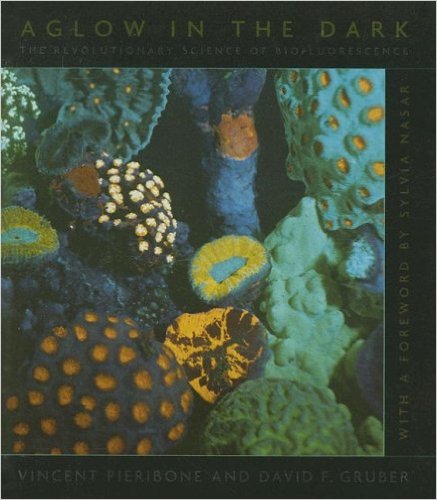














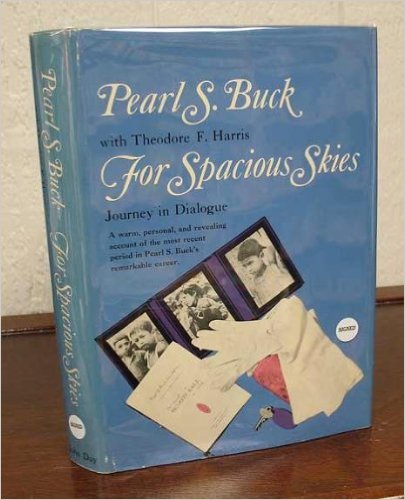














































































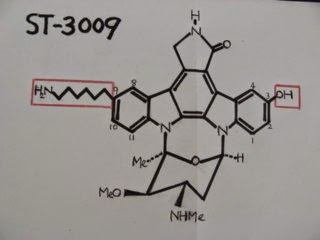







































![アルニカ [ウサギ菊]](https://blogger.googleusercontent.com/img/b/R29vZ2xl/AVvXsEilqv0qou-4NpoUh1PFWYK0FSaozKazee0VYGxsFtfjBma46ya9yxqB6X9Ziuob25tNRpBbnFIcUFlOEjz1WcAjVNzjGl1E-QbDgE7VOLkjZDx0eplJ1WJHf0fTEWXxf8F5G-cHUhqHELY9/s1600/ArnicaS.jpg)


















































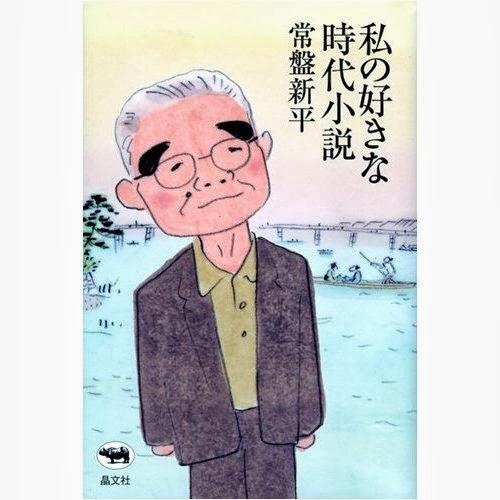










































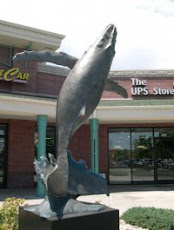










































.jpg)























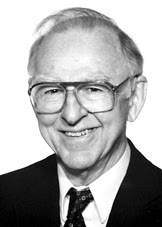








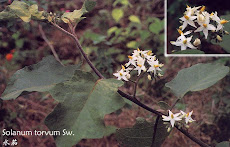







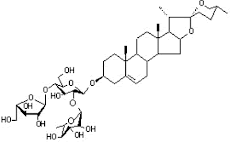















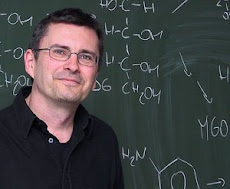















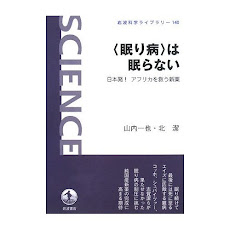












.jpg)















































